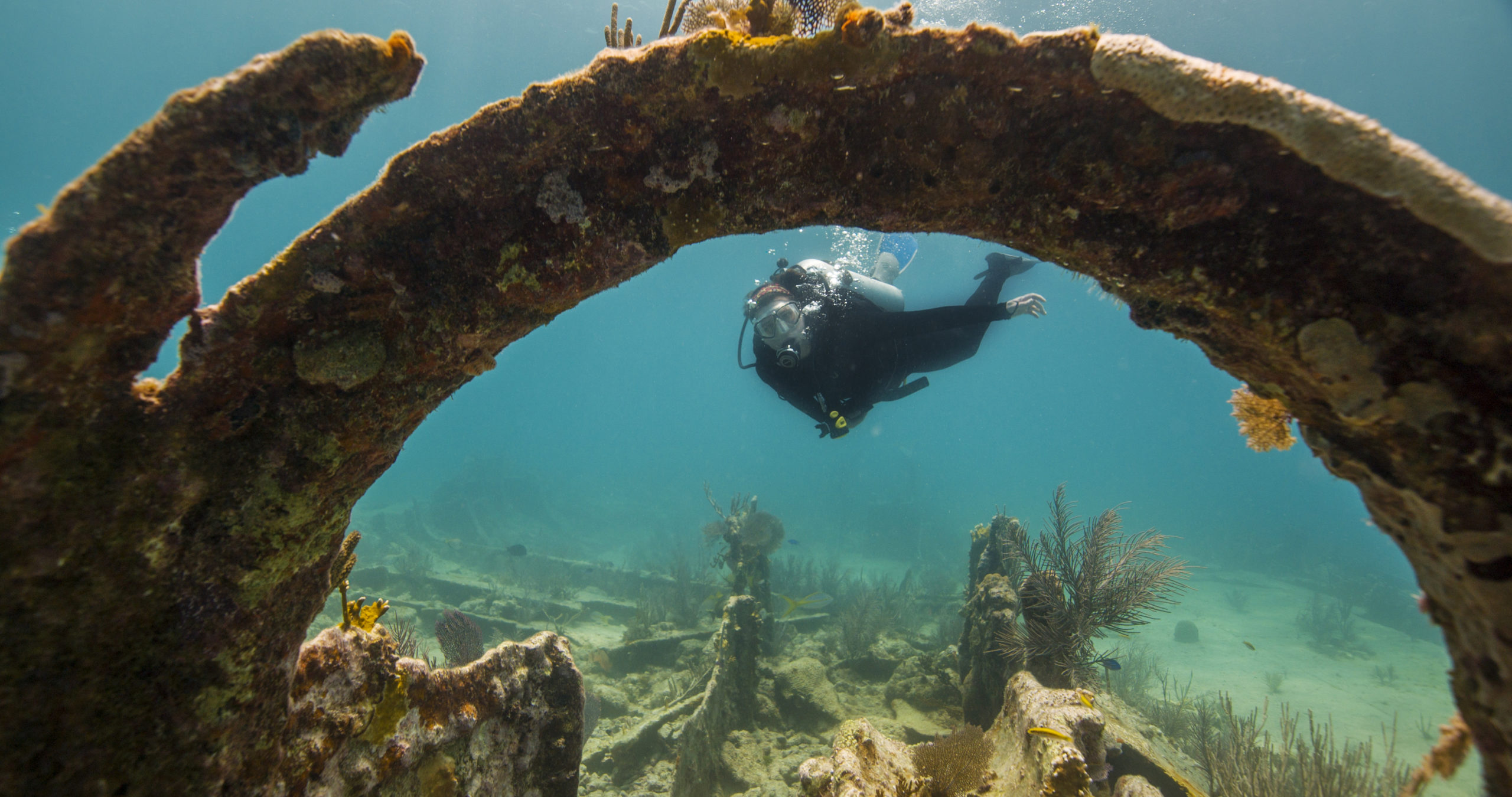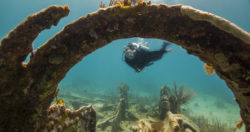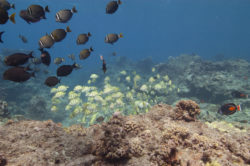
What’s the Difference? National Marine Sanctuaries vs. Marine National Monuments
We wouldn’t blame you if you thought national marine sanctuaries and marine national monuments are the same thing. Both are categories of Marine Protected Areas (MPAs) – policy and conservation tools used to protect coastal and ocean habitats, species, and seascapes – and while they have many similarities, they aren’t exactly alike.
We can think of MPAs as a toolbox that contains different tools that aim to solve specific problems in our waters. For example, a no-take MPA where fishing and other human activity is prohibited might work well to protect endangered fishery stocks in the ocean, but the same strategy of protection wouldn’t be useful in an estuarine reserve or wetland environment. Some MPAs are seasonal while others are year-round. Some aim to protect entire ecosystems while others focus on individual or a small group of resources like wildlife, habitat, or cultural artifacts. Some are off limits while others allow recreation and tourism. In the United States, we have a diversified network of more than 1,000 MPAs, 17 of which (15 national marine sanctuaries and two marine national monuments) make up the National Marine Sanctuary System.
The main differences between sanctuaries and monuments in the U.S. is how we create and manage them. Both protect rich cultural and historical resources, iconic species, and vibrant ecosystems but they do have different purposes, key elements, and applications in doing so. Check out our simplified list of what makes each unique.

The wreck of the City of Washington in Florida Keys National Marine Sanctuary. Photo: David J. Ruck/NOAA
National Marine Sanctuaries
Designated by the National Oceanic and Atmospheric Administration (NOAA) or Congress under the National Marine Sanctuaries Act. NOAA’s Office of National Marine Sanctuaries (ONMS) manages each site in the National Marine Sanctuary System and may have other state or tribal co-managers.
The National Marine Sanctuaries Act is the only federal law written specifically to protect areas of the ocean and Great Lakes. This law grants NOAA the authority to develop management plans, issue regulations, and enforce those regulations for each sanctuary and the System as a whole. These regulations are developed and updated through a public process. The National Marine Sanctuaries Act provides the authority for NOAA to assess civil penalties for violations of the NMSA or its implementing regulations, and to seek damages from those responsible for injuring sanctuary resources.
The sanctuary designation process, based on requirements in the National Marine Sanctuaries Act and the National Environmental Policy Act, involves many opportunities for public engagement, including local community meetings, public comment periods, and consultation to inform NOAA’s development of the management plans and sanctuary regulations, before and after a sanctuary is designated.
There are two ways a new sanctuary can achieve designation:
Through a nomination and designation process administered by ONMS: Local communities can nominate a special place in the ocean or Great Lakes to become a sanctuary. ONMS reviews nominations to ensure they have diverse support and meet criteria of national significance. After NOAA accepts a site, it may be considered for potential designation. The sanctuary designation process is a rigorous public process that emphasizes community participation and engagement to ensure each sanctuary takes into account the needs of that community. No site is officially designated without the final review and approval of the relevant governor(s) and Congress.
By Congress: A community can encourage their Members of Congress to pass legislation to create a national marine sanctuary that is later signed into law by the President. Congress has designated three national marine sanctuaries this way: Florida Keys, Hawaiian Islands Humpback Whale, and Stellwagen Bank.
Due to the high level of public input in the process, sanctuaries typically take longer to designate than monuments.
All national marine sanctuaries are required to have a community Advisory Council comprised of local stakeholders representing citizen, expert, and industry perspectives. These site-focused, community-based groups provide guidance and make recommendations to their sanctuary superintendent on issues including management, science, service, and stewardship.

Papahānaumokuākea Marine National Monument Photo: Robert Schwemmer
Marine National Monuments
Designated by the President through a presidential proclamation. The Antiquities Act of 1906 grants the president the authority to establish monuments that protect and preserve natural, or cultural landmarks of scientific or historic significance.
Monuments are usually managed by multiple federal and state agencies. Each governance group is unique and depends on the language of the presidential proclamation that created the site.
Allowable activities for each site are determined by the language in the presidential proclamation and monument management plan.
The Antiquities Act does not require any public process. However, the designation of marine national monuments is often preceded by some level of public engagement.
Monuments can be designated quickly depending on how a president chooses to develop and sign their proclamation.
There is no obligation under the Antiquities Act for a monument to have an Advisory Council, however some monuments do have advisory councils or committees.
Presidents have modified national monument boundaries and management provisions established by earlier presidential proclamation.
The National Marine Sanctuary System includes two marine national monuments as a result of ONMS being designated a management partner in each presidential proclamation. These sites are Papahānaumokuākea Marine National Monument in the northwestern Hawaiian islands and Rose Atoll Marine National Monument in American Samoa.
Click here to learn more about sanctuaries and monuments within the National Marine Sanctuary System.
